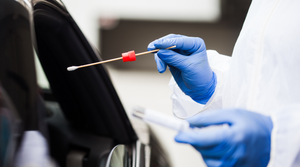Biosensors on the Inside Track
October 1, 2002
Originally Published MPMN October 2002
EDITOR'S PAGE
Biosensors on the Inside Track
 When researchers first began toying with the idea of implanting biosensors in the human body, the technology's potential fired up imaginations. One day, some suggested, these silent sentinels would patrol our inner organs for symptoms of disease and even begin treatment. We're not there yet, and significant technological hurdles remain, but there are encouraging signs that these types of devices may in some limited form treat disease and monitor our health from within. In an article in the August 9 issue of Science magazine, Robert R. Service reports on recent advances and some remarkable developments that may lie ahead.
When researchers first began toying with the idea of implanting biosensors in the human body, the technology's potential fired up imaginations. One day, some suggested, these silent sentinels would patrol our inner organs for symptoms of disease and even begin treatment. We're not there yet, and significant technological hurdles remain, but there are encouraging signs that these types of devices may in some limited form treat disease and monitor our health from within. In an article in the August 9 issue of Science magazine, Robert R. Service reports on recent advances and some remarkable developments that may lie ahead.
It should come as no surprise that blood glucose monitoring is the "killer app" of biosensor technology. "Diabetes now afflicts some 16 million Americans," writes Service. "The test strips for analyzing those drops of blood are a $2 billion-a-year business." It stands to reason that a device that can measure glucose levels without finger sticks has the potential to capture a huge market share. According to a study on the U.S. market for biosensors and bioelectronics published this month by Business Communications Company, Inc., "pioneering biosensor devices" such as those measuring glucose levels will propel market growth for these components in the otherwise sluggish medical analysis sector.
The key challenge faced by developers of implantable biosensors, writes Service, is the body's natural immune response to the presence of artificial material. One solution developed by Medtronic Minimed, the diabetes management business of Medtronic, is a tiny enzyme-based sensor that is implanted under the skin for up to three days. Although a step in the right direction, the device's limitations—notably that a new sensor must be inserted every few days—makes it less than ideal from the user's point of view, according to Service. A more promising alternative was presented by the same company at the annual meeting of the American Diabetes Association (ADA) in San Francisco. At the June event, Medtronic Minimed announced research results indicating that "a medical device mimicking the human pancreas is closer to becoming a reality."
The tests, conducted in Montpellier, France, involved the implantation of a long-term glucose sensor and insulin pump in patients for six months. The sensor measures glucose levels using an enzyme-based electrochemical technology and is connected to the insulin pump via an abdominal lead. Patients program the pump to deliver insulin using a handheld remote programmer. Weekly glucose readings taken by the sensor during the six months compared favorably with the results of at least six daily finger sticks, according to researchers.
Two closed-loop experiments, in which continuous glucose data from the sensor was used to automatically regulate insulin delivery from the implantable pump, also showed positive results. A system that continuously records glucose levels and delivers insulin automatically without patient intervention—an artificial pancreas, in sum—may well be within reach. To find out more about this study, go to the newsroom at www.medtronic.com.
In situ sensing is achieving breakthroughs in other areas, as well. One development cited by Service involves tiny pressure sensors that can be implanted during spinal surgery, when neighboring vertebrae are fused together. Micromechanics expert Shuvo Roy at Ohio's Cleveland Clinic Hospital launched the project in the hopes of eliminating unnecessary follow-up surgery.
After treating patients having problems with the spongy disks that separate the bones in the spine, doctors routinely conduct ultrasound tests to ensure that the vertebrae are fused properly. In about 15% of cases, writes Service, those readings are incorrect and consequently another surgery is performed. To prevent this, Roy has produced a microelectromechanical sensor that monitors the load being carried by the bones in the spine. Ultimately, Roy hopes to reduce the size of the sensors to a cubic millimeter and implant them with a syringe.
As Service notes in his article, we may be a long way from Fantastic Voyage or the totally invaded body . . . but perhaps we're not so far from the first brief excursions.
Copyright ©2002 Medical Product Manufacturing News
You May Also Like


